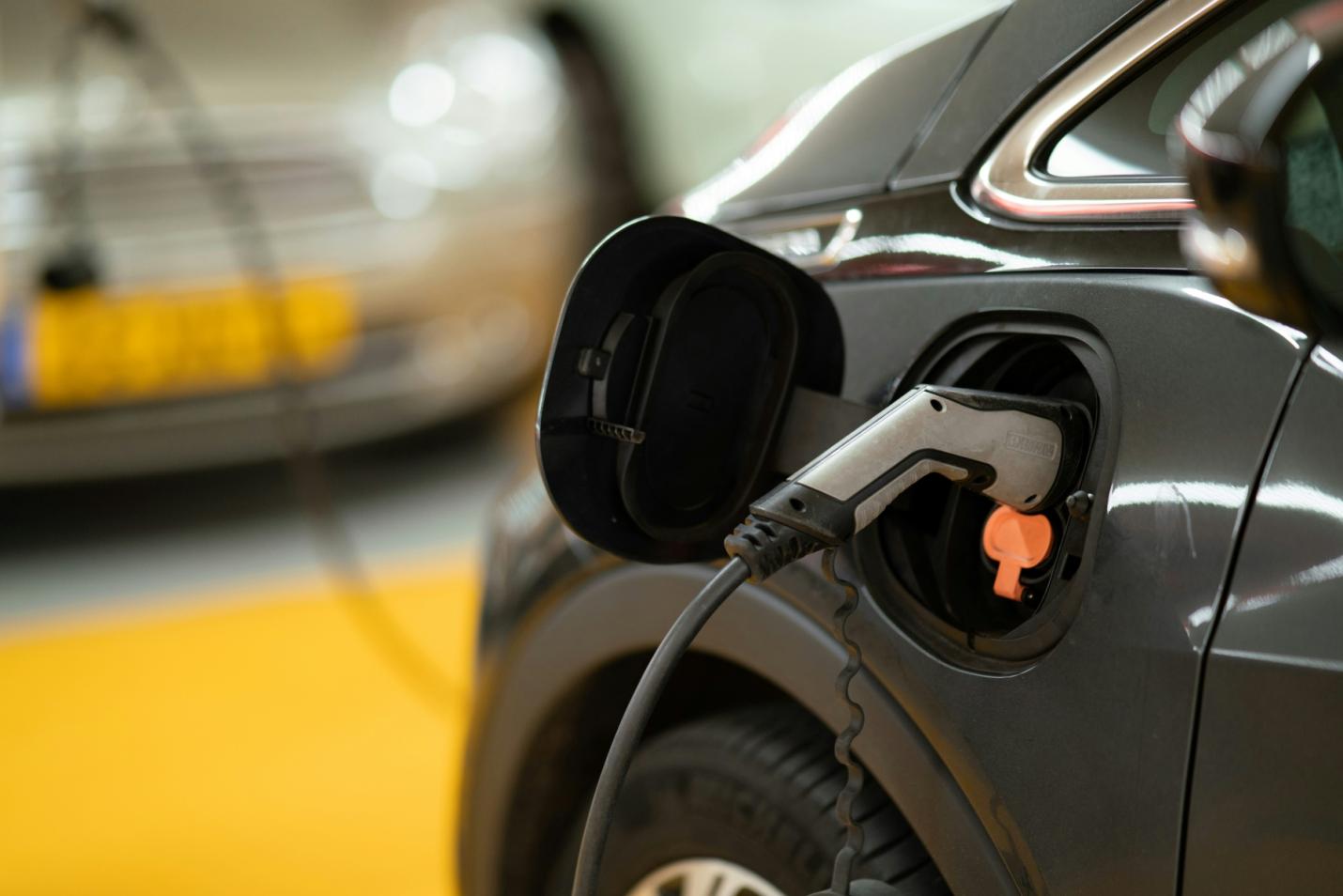Electronic vehicles (EVs) have completely transformed the automotive landscape. High-performance batteries, reduced charging time, and lower operational costs have driven the popularity of these vehicles to a new height. Apart from the development of high-tech, sophisticated electric vehicles, charging methods also experience changes to satisfy different charging needs, such as the bidirectional charging that will be discussed in this article.
Bidirectional charging is a trending concept in the automotive world. Leading automakers, including Ford, Hyundai, Mitsubishi, Lucid, Nissan, and Tesla, plan on integrating this technology into their upcoming electric vehicles.
But why is there so much hype over this technology, and what is bidirectional charging? Let’s explore together!
What Is Bidirectional Charging?
1.What Is Bidirectional Charging?
Bidirectional EV charging refers to a technology that supports two-way charging. It allows the electric vehicle to be charged using power from a power source (like the grid) and supply the stored electricity for other uses, like homes or other vehicles.
Electric vehicles with bidirectional capabilities use a bidirectional EV charger to control the complex conversion process. The device works as a rectifier and an inverter, achieving the power conversion between AC power and DC power. For instance, the charger converts AC from the grid into DC, which can be stored in the car batteries. When you need to power up other devices, the stored DC energy can be converted into AC power, which is the form used by the grid and appliances.
What Is Bidirectional Charging vs. Unidirectional Charging?
Traditional unidirectional charging systems only support the flow of electricity in one direction, i.e., from the power source to the electric vehicle. Bidirectional energy systems, on the other hand, enable the flow of energy to and from the electric vehicle. This means if your EV is fully charged, you can use the stored energy to power your home and other electronic devices.
Is Bidirectional EV Charging Safe?
Yes, the technology was designed with safety in mind. Electric vehicles with bidirectional charging capabilities are equipped with critical hardware and software to manage the two-way current flow. This goes the same with the bidirectional chargers.
2.Different Types of Bidirectional Charging
Now that you know “What is bidirectional charging?”, here are the most common applications or types of bidirectional EV charging:
- Vehicle to Grid (V2G)
Vehicle to grid (V2G) is the future. It enables EV owners to charge their batteries using green energy sources such as solar power. This stored energy is then sent to the grid during peak hours using a converter embedded in the EV charger.
The smart V2G charging system can help meet the growing electricity demands in a particular locality while minimizing carbon emissions. EV owners can also earn additional income by trading energy.
- Vehicle to Home (V2H)
An electric vehicle with V2H capabilities uses a bidirectional EV charger to power a home or office. The charger has a DC-to-AC converter system that regulates the flow of electricity between the EV and the home.
This technique allows EV owners to power their homes during power outages or peak usage times. V2H systems can also help reduce electricity costs by reducing dependence on the grid.
- Vehicle to Load (V2L)
V2L is probably the most widely used bidirectional EV charging method. Vehicles with V2L capabilities have a DC to AC inverter accompanied by a standard power outlet. This allows EVs to power electronic devices or appliances when there is no access to a power source, such as camping or during emergencies.
- Vehicle to Vehicle (V2V)
Electric vehicles have a maximum range that determines how far they can travel before recharging is necessary. The number can be affected by multiple factors, like battery capacity, vehicle efficiency, and environmental temperature. This is where V2V charging becomes useful. V2V charging supports energy transfer between two electric vehicles, encouraging resource optimization between electronic vehicles.
3.Benefits of Bidirectional Charging
Knowing “What is bidirectional charging?” and its different applications is not enough; you should know its pros and cons, as well. Here, we discuss the benefits of bidirectional charging!
- Reduced Energy Costs
Bidirectional charging allows EV owners to store energy when electricity is cheaper and use it during peak times. This reduces their reliance on the grid, enabling EV owners to minimize their energy expenses.
Additionally, energy stored in the vehicle can be fed back to the grid during high-demand periods. By selling energy to the traditional grid, EV owners can enjoy incentives leading to more savings and reduced overall energy costs.
- Emergency Power Backup
Bidirectional charging transforms your vehicle into a large power bank. EVs can supply power to homes or businesses during outages or emergencies. Having a backup power source ensures that essential appliances remain operational when the grid is down.
- Increased Grid Flexibility and Stability
Bidirectional charging allows vehicles to send extra energy back to the grid. By managing the supply and demand chain in a particular region or locality, EV owners can help stabilize the grid and lower the risk of blackouts in the area.
4.Limitations of Bidirectional Charging
What about its limitations? Although bidirectional EV charging offers many benefits, the technology also has certain limitations, such as:
- Limited Availability
Bidirectional charging technology is not yet widely available. A limited number of EV models have bidirectional charging capabilities. This limits its adoption and the benefits that come with it.
- Infrastructure Development
Bidirectional vehicles need adequate infrastructure, such as compatible chargers and grid integration systems, for smooth functioning. The framework for these vehicles is in its developmental stages. Thereafter, building and expanding their infrastructure still requires time and investment.
- Regulatory and Standardization Problems
The absence of universal standards for bidirectional charging can cause confusion. Different regions have their own rules, leading to inconsistencies, which makes it harder to widely adopt the technology.
- Battery Life and Performance
Improper bidirectional charging can affect the performance and lifespan of EV batteries. Frequent charging and discharging might cause early wear and tear, shortening the battery’s life and leading to a major expense. It can also potentially affect the overall lifespan and efficiency of the vehicle’s battery. However, it is worth noting that bidirectional charging is gaining attention and making improvements due to its unique benefits!
There you go; now you may have a full understanding of the question: What is bidirectional charging?
Unidirectional & Bidirectional Charging Module Recommendation
If you are interested in unidirectional and bidirectional charging solutions, you may need leading EV charger modules to deliver enhanced performance.
Winline manufactures different EV charging modules that ensure the optimal performance of our clients’ charging stations. For now, there are 800,000+ modules in application globally. Next, let’s have two of our top-rated EV charger modules for illustration!
1.UXC100040-40kW 1000V Isolate Unidirectional DC-DC Charging Module
This EV charging module is designed for high efficiency and versatility. It supports a wide range of charging applications with an output voltage range of 50-1000 Vdc. The expansive voltage range makes it suitable for a variety of scenarios, such as integrated photovoltaic (PV) energy storage charging stations and multi-vehicle DC charging stations.
You can trust its efficient and safe operation due to the following features:
√ A maximum full load efficiency of 97.5%
√ Low electromagnetic radiation and strong resistance to interference with adherence to the IEC-61851-21 standard for EMC Class B
√ MPPT function that optimizes energy efficiency and enhances system reliability
√ A semi-independent airflow design that can ensure good heat dissipation
2.UXC95050B-20kW 950V DC-DC Isolated Bi-directional Charging Module
This bidirectional charger module is packed with essential features for efficient energy management. It has a wide output voltage range of 200V to 950V on both the vehicle and battery sides, including energy storage systems or renewable power systems.
It has the following highlights:
√ High conversion efficiency of 98.8%
√ Adherence to Class B requirements for both EN61000-6-1 and EN61000-6-3 standards
√ CE and UL certification for global applications
√ A compact design with powerful performance (45.4W/in³)
Wrapping It Up
Here, we reach the end of this article focusing on the question: What is bidirectional charging? Electric vehicles are booming globally, being an eco-friendly mode of transportation. Moreover, advanced charging methods, such as bidirectional EV charging, will allow them to actively contribute to energy management in the future.
Winline is at the forefront of this transformation. We have dedicated experience in the EV charging sector since 2007 and garnered 140+ invention patents with our innovative designs. Contact Winline if you need leading EV charger modules for your charging station business, and we have more for you to explore!



